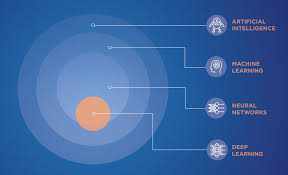Source-analyticsinsight.net
The boons of machine learning have been leveraged in the industry in the past many years. With its increasing implementation, the ML tools have also evolved with time. Today, people can easily work with machine learning owing to its easy-to-use, user-friendly tools. As the gathering of data and turning it into actionable insights has been automated enough, people with some knowledge of technology and motivation can work with ML.
These tools possess the strength to handle the mundane work of collecting data, adding structure and consistency where possible, and then starting the calculation. The modern-day tools can simplify the data gathering process and keeping that information in rows and columns.
Such user-friendly features are paving the way for people who work with numbers, spreadsheets and data towards machine learning while eliminating the need to be great at programming and data science.
Below are the five tools that simplify using machine learning algorithms.
Splunk
Splunk’s original version started off as a tool for searching through the voluminous log files created by modern web applications. Since then it has grown to analyze all forms of data, especially time-series and others produced in sequence. The latest newest versions of Splunk includes apps that integrate the data sources with machine learning tools like TensorFlow and some of the best Python open-source tools. Such modern tools offer quick solutions for detecting outliers, flagging anomalies and generating predictions for future values.
DataRobot
DataRobot incorporates a variety of regression techniques, ranging from the simplest (linear regression) to complicated statistical classic regression models, to more complex techniques including gradient boosting and neural networks. The platform can also solve simple binary classification problems, as well as highly complex multiclass classification problems with up to 100 different categories. Imagine being able to predict which product a customer is likely to purchase next, or why a customer is likely to churn, with a high degree of accuracy. With DataRobot it’s easy to automate the creation of machine learning models like this – with unprecedented transparency so you can understand and trust the predictions they make.
H2O
H2O has made it easy for non-experts to experiment with machine learning. In order for machine learning software to truly be accessible to non-experts, the company has designed an easy-to-use interface that automates the process of training a large selection of candidate models. H2O’s AutoML can also be a helpful tool for the advanced user, by providing a simple wrapper function that performs a large number of modeling-related tasks that would typically require many lines of code, and by freeing up their time to focus on other aspects of the data science pipeline tasks such as data-pre-processing, feature engineering and model deployment. It can be employed for automating the machine learning workflow, which includes automatic training and tuning of many models within a user-specified time-limit.
RapidMiner
RapidMiner’s automated machine learning can exponentially reduce the time and effort required to create predictive models for all businesses and organizations regardless of size, resources or industry. With its Auto Model, it’s possible to build predictive models in just 5 clicks. There’s no need for technical expertise. All users need to do is upload his data and specify the outcomes he wants, then Auto Model will produce the high-value insights he needs. RapidMiner Auto Model is part of a path to fully automated data science, from data exploration to modeling to production, when combined with Turbo Prep and Model Ops in RapidMiner Studio Enterprise.
BigML
BigML’s AutoML is an Automated Machine Learning tool for BigML. The first version of AutoML helps automate the complete Machine Learning pipeline, not only the model selection. To boot, it’s pretty easy to execute. The user needs to give it training and validation datasets and it will give back a Fusion with the best possible models using the least possible number of features. BigML’s AutoML performs three main operations: Feature Generation, Feature Selection, and Model Selection.
